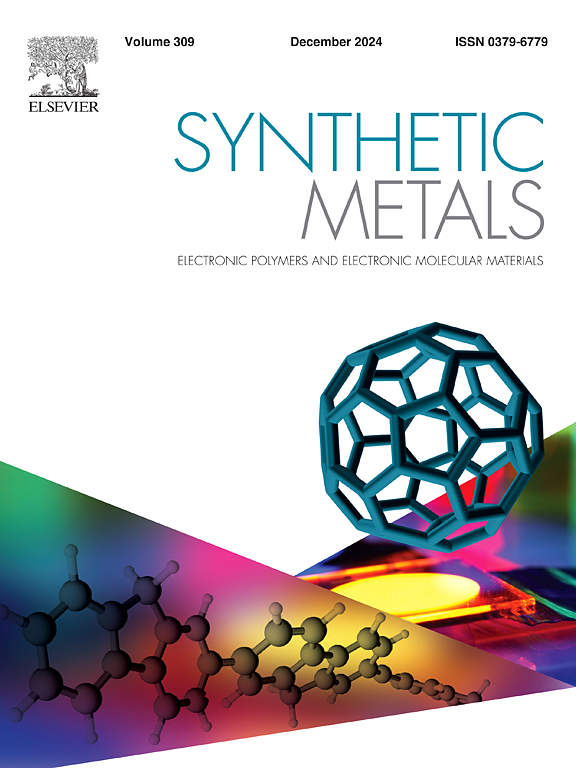通过分子内非共价相互作用进行分子构象调制,可以在dpp基聚合物热电材料中实现结晶度和掺杂效率的良好平衡
IF 4.6
3区 材料科学
Q2 MATERIALS SCIENCE, MULTIDISCIPLINARY
引用次数: 0
摘要
聚合物热电材料的电导率(σ)受到优化结晶度和实现高掺杂效率之间的权衡的严重制约。解决这一问题的传统策略倾向于采用侧链工程或骨干硬化,这往往会损害σ。在此,我们提出了一种构象调制策略,利用分子内非共价相互作用将结晶度与掺杂动力学解耦。将苯并噻唑二唑(BTZ)受体单元整合到噻吩取代的二酮吡咯(2ThDPP)骨架上,设计并合成了双受体共聚物P(2ThDPP-BTZ)。BTZ掺入虽然略微加深了HOMO能级,但会诱发分子内与相邻的2ThDPP段的定向S···N相互作用,形成略弯曲的S形平面构象。与刚性线性均聚物P(2ThDPP)相比,这种构象调制增强了掺杂剂的渗透和扩散动力学,而聚合物的结晶度对电荷输运没有明显的影响。因此,fecl3掺杂的P(2ThDPP-BTZ)具有优异的掺杂动力学和较高的掺杂水平,从而提高了其热电性能。这项工作为通过构象调制在先进电子材料中的分子设计策略提供了新的见解。本文章由计算机程序翻译,如有差异,请以英文原文为准。
Molecular conformational modulation via intramolecular non-covalent interactions enables a good balance of crystallinity and doping efficiency in DPP-based polymer thermoelectrics
The electrical conductivity (σ) of polymeric thermoelectric materials is severely constrained by the trade-off between optimizing crystallinity and achieving high doping efficiency. Conventional tactics for addressing this issue tend to adopt the side-chain engineering or backbone rigidification, which frequently compromise σ. Herein, we proposed a conformational modulation strategy to leverage the intramolecular non-covalent interactions for decoupling the crystallinity from the doping kinetics. A dual-acceptor copolymer, P(2ThDPP-BTZ), was designed and synthesized by integrating a benzothiadiazole (BTZ) acceptor unit into a thiophene-substituted diketopyrrolopyrrole (2ThDPP)-based backbone. Although the BTZ incorporation slightly deepened the HOMO energy level, it would induce the directional intramolecular S···N interactions with the adjacent 2ThDPP segments, resulting in a slightly curved S-shaped planar conformation. Compared with the rigid linear homopolymer P(2ThDPP), such a conformational modulation enhanced the dopant permeation and the diffusion kinetics with no significant compromise in the polymeric crystallinity for charge transport. Consequently, the FeCl3-doped P(2ThDPP-BTZ) achieved the superior doping kinetics and a higher doping level, thereby enhancing its thermoelectric performance. This work provides a new insight into molecular design strategies in advanced electronic materials through conformational modulation.
求助全文
通过发布文献求助,成功后即可免费获取论文全文。
去求助
来源期刊

Synthetic Metals
工程技术-材料科学:综合
CiteScore
8.30
自引率
4.50%
发文量
189
审稿时长
33 days
期刊介绍:
This journal is an international medium for the rapid publication of original research papers, short communications and subject reviews dealing with research on and applications of electronic polymers and electronic molecular materials including novel carbon architectures. These functional materials have the properties of metals, semiconductors or magnets and are distinguishable from elemental and alloy/binary metals, semiconductors and magnets.
 求助内容:
求助内容: 应助结果提醒方式:
应助结果提醒方式:


